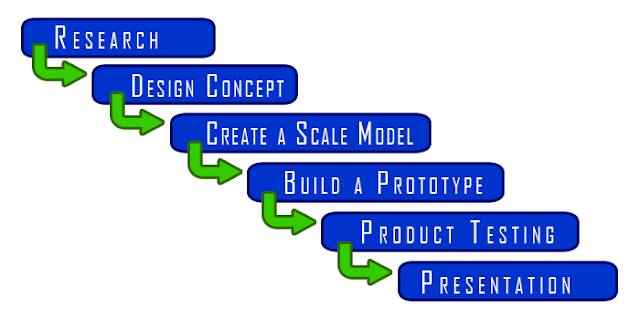 |
| The Furniture Design Process |
1. Research:
Unlike other design processes the furniture design process does not begin with a brief, as the client, if there is one, is usually requesting a bespoke piece of furniture without any specific requirements, other than perhaps the size. Also, furniture designers who are self employed often create pieces as they go and sell them on afterwards. In this sense the term furniture is referring to a wide range of items from chairs to cabinets to wardrobes to beds. In order for a furniture designer, or any designer for that matter, to be continually inspired it helps to be well researched. Understanding what other designers have done before you and what your contemporary peers are doing helps you to come up with your own ideas too. In this way, the research is non specific and it is simply recommended to continually keep up to date with what is happening in your area and to be aware of the furniture design history which preceded you. See the furniture design history timeline to gain an insight into the various types and styles of furniture that exist.
2. Design Concept:
The first real step in the process is the idea or concept; this is the starting point from which everything else grows. How you come up with the idea may be through an organised brainstorming session or it may occur naturally while researching or it may be just a eureka moment that happens out of the blue. However the idea comes to you it is important to document your idea by writing it down, sketching the general design form and perhaps the joinery methods too. As well as keeping the concept exactly as you originally imagined it, this documentation will also serve as evidence that it was your original idea in case it is later copied by someone else, so it may be a good idea to sign and date it.
3. Scale Model:
Next you should build a small, scale model of the idea as a way of seeing how it will look and to identify any problems before proceeding to build a full scale prototype. Sometimes there can be unforeseen complications that don't show up on paper, and they can be dealt with at this stage before realising it later and wasting full sized materials in order to do so. The scale model may also help identify which type of joinery techniques are most appropriate.
4. Prototype:
The next step is to build a to-scale (full size), working prototype.A prototype is basically the small scale model made full sized. If this is a once of piece, what this means is that you are in fact building the finished product while if the design is intended for mass production you are simply building a single piece to ensure all of the construction techniques and materials that will be used are suitable. This means that the exact same construction process that will be used for the final product should be used for the prototype too. See the furniture joinery section for help on choosing your construction method. Additionally, any errors that didn't show up in the small scale design will be worked out with the prototype so that there will be no further complications before manufacturing of the furniture begins.
5. Testing:
Once the prototype has been built, it needs to be tested. If it's a chair, someone needs to sit on it, if it's a shelf, something needs to be put on it, simple really. For the purposes of mass production, furniture should be stress tested and sometimes several prototypes are made so that a few can be broken in order to find out what the limits of the piece of furniture are.
6. Presentation:
Once completed the finished piece should be photographed for portfolio purposes. If there is a client then once all of the testing has been completed, the piece is presented to them. They will either take it as it is or they ,may ask for the piece to be changed or tweaked in some way. If it's the former than the design process is complete, and if it's the latter then it may be back to the workshop! If there is no client then the finished piece should be put on display for sale.




















